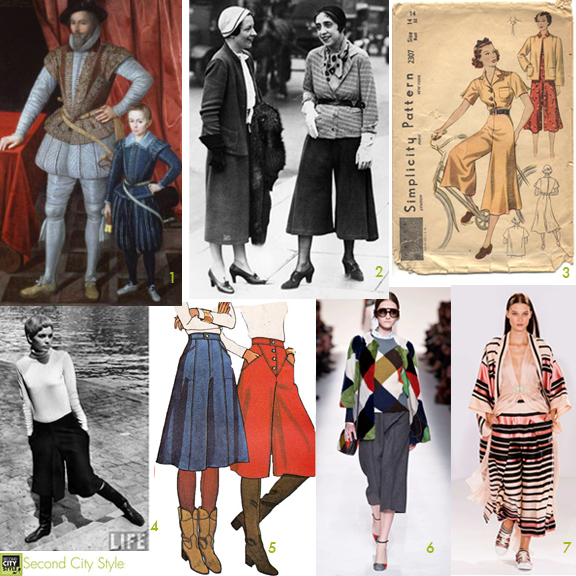
Culottes began their fashion journey as a men’s pant—in the Renaissance era, upper class men wore breeches (or culottes in French). Often made out of silk, they were fitted trousers that were fastened just below the knee. They became so synonymous with the upper class that when the French Revolution came around in the late–1700s, the revolutionaries were called sans culottes, or “without culottes” as they fought upper class ideals.
In the Victorian Era, they suddenly returned as a feminist garment. In a time that emphasized restriction with long skirts and crinolines, culottes stood for women’s freedom. They described a “split skirt” used for such activities as horseback riding and bicycling. Culottes would eventually prove a turning point for women’s fashion, in the direction of pants as a mainstay. Elsa Schiaparalli also featured culottes in a 1931 collection, much to critics’ dismay: they were heralded as too masculine. Now, it appears they are here to stay.
Given fashion’s recent obsession with longer skirt lengths and loosely-fitted trousers, the culotte’s comeback isn’t a big surprise. They were featured on Fall 2014 runways like Valentino, Sonia Rykiel, Tibi and more, and they are making a splash on Spring 2015 runways in shows like See by Chloe and Temperley London. Not quite a full pant nor a short, they are the perfect garment to transition into fall and throughout spring.
1. Portrait of Sir Walter Raleigh and his Son, 1590
2. Elsa Schiaparelli in Culottes of her own design, 1935
3. Culottes Simplicity Pattern, 1940s
4. Model Brigit Larsen wearing culottes on the banks of Ile 1967, Pierre Boulat for Life Magazine
5. 1976 Culottes
6. Valentino 2014 Fall RTW, NYMag
7. Temperley London Spring 2015 RTW, NYMag
– Tanisha Wallis
Image Layout: Second City Style

